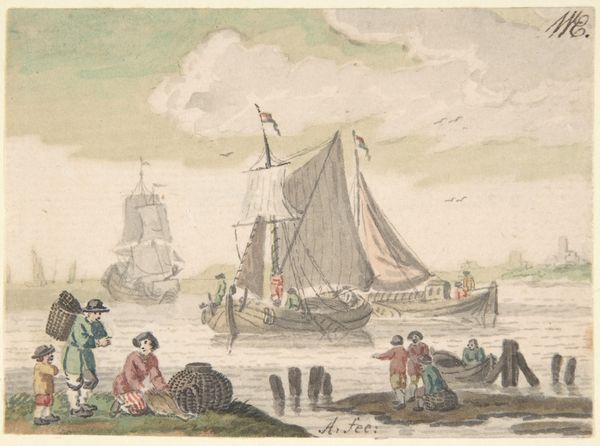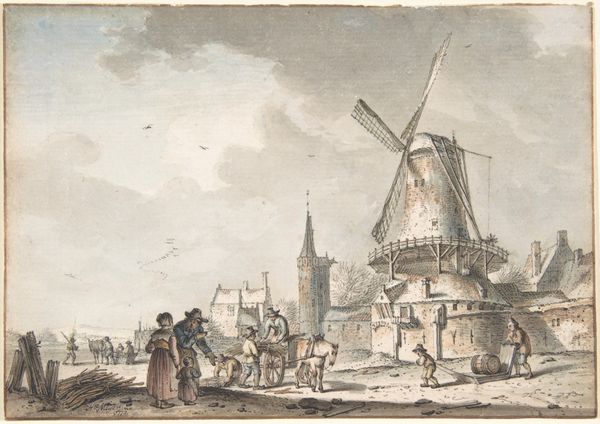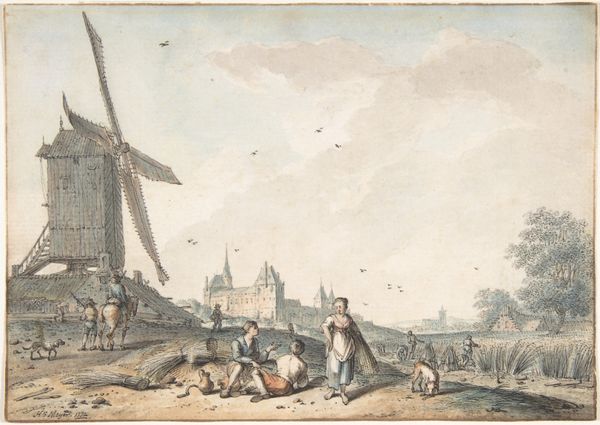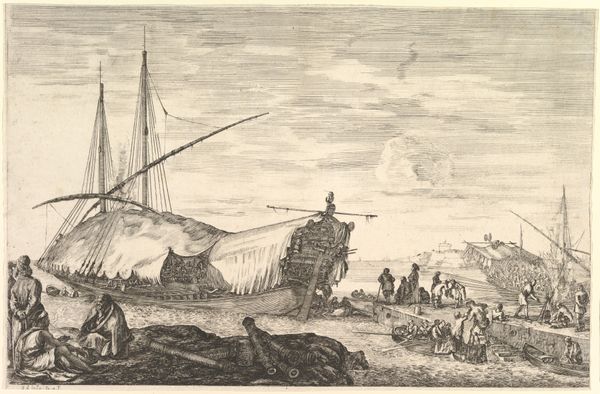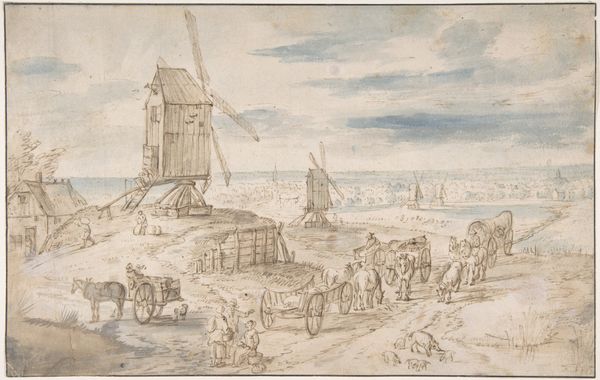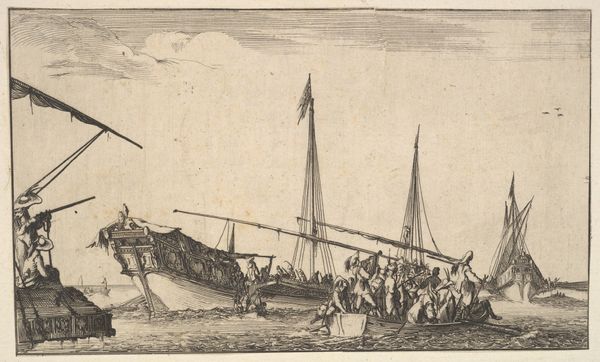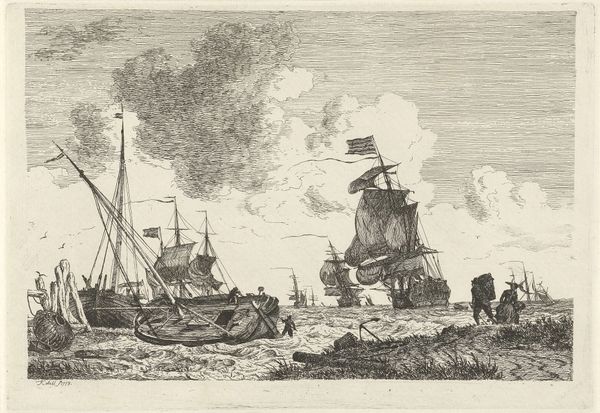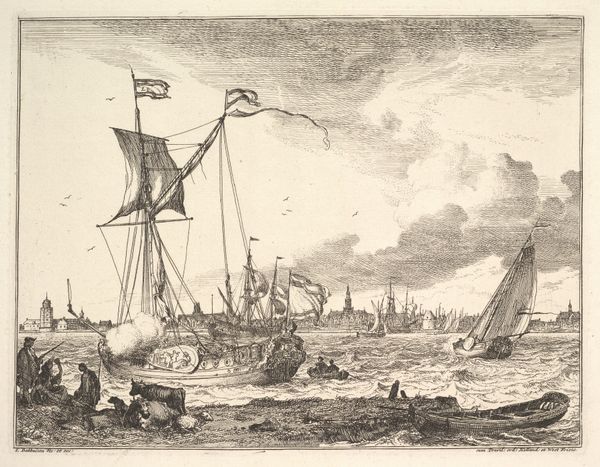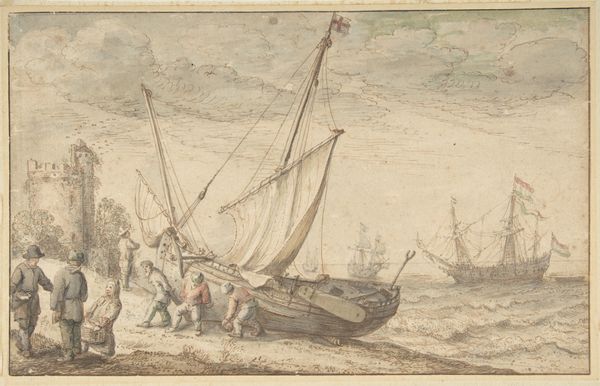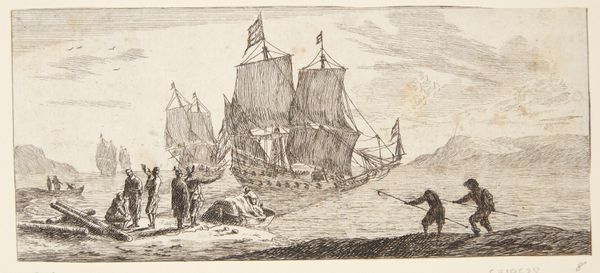
drawing, coloured-pencil, plein-air, watercolor
#
drawing
#
coloured-pencil
#
dutch-golden-age
#
plein-air
#
landscape
#
watercolor
#
coloured pencil
#
men
#
watercolour illustration
#
genre-painting
Dimensions: sheet: 5 3/16 x 7 7/16 in. (13.1 x 18.9 cm)
Copyright: Public Domain
Curator: Hendrik Meijer's "The Twelve Months," created around 1772, is a captivating drawing using watercolor and coloured pencil that we can see here at The Met. It offers a fascinating glimpse into rural life during the Dutch Golden Age. Editor: It's a breezy scene! Makes you almost smell the hay and feel the slight chill from the water. There's something playful and light about the color palette that sets the mood. Curator: Absolutely. It's important to recognize how Meijer positions this scene within the genre tradition, while also potentially commenting on rural labor through a lens of social commentary, reflecting the class structures inherent in Dutch society at that time. Editor: The way those figures just casually hang out on that giant haystack…I almost want to climb up there myself, feel the scratchy texture against my skin and look out over the landscape! Are they aware, I wonder, of the labor required to build that very pile they recline upon? Curator: That's precisely the tension, I think, Meijer attempts to unpack. We need to examine how representations of labor in art serve to either reinforce or challenge the social order and class distinctions. Does the composition portray dignity in labour, or is there an element of idealization that obscures the hardships faced by rural communities? Editor: Hmmm… you're making me think. But even with the potential deeper readings of power and class, I am struck by its simple portrayal of ordinary life in a pretty spot in history. Curator: It’s not merely about what is seen, but what is represented and, importantly, what might be omitted or underrepresented. Considering the limited scope of visibility afforded to marginalized groups in that era, whose stories might remain untold or unseen within such landscapes? Editor: Heavy. Maybe there’s a bit of the unheard song of the working class humming underneath all the picturesque watercolor after all… Anyway, it sure is pleasant to look at and maybe remember the unseen, too. Curator: Exactly. And understanding the social dynamics influencing its creation enriches our contemporary dialogue with historical narratives. Editor: It certainly gives new meaning to just enjoying the breeze off that pile of hay, doesn't it? Thanks, Hendrik! And thanks to the ghosts in the hay!
Comments
No comments
Be the first to comment and join the conversation on the ultimate creative platform.

